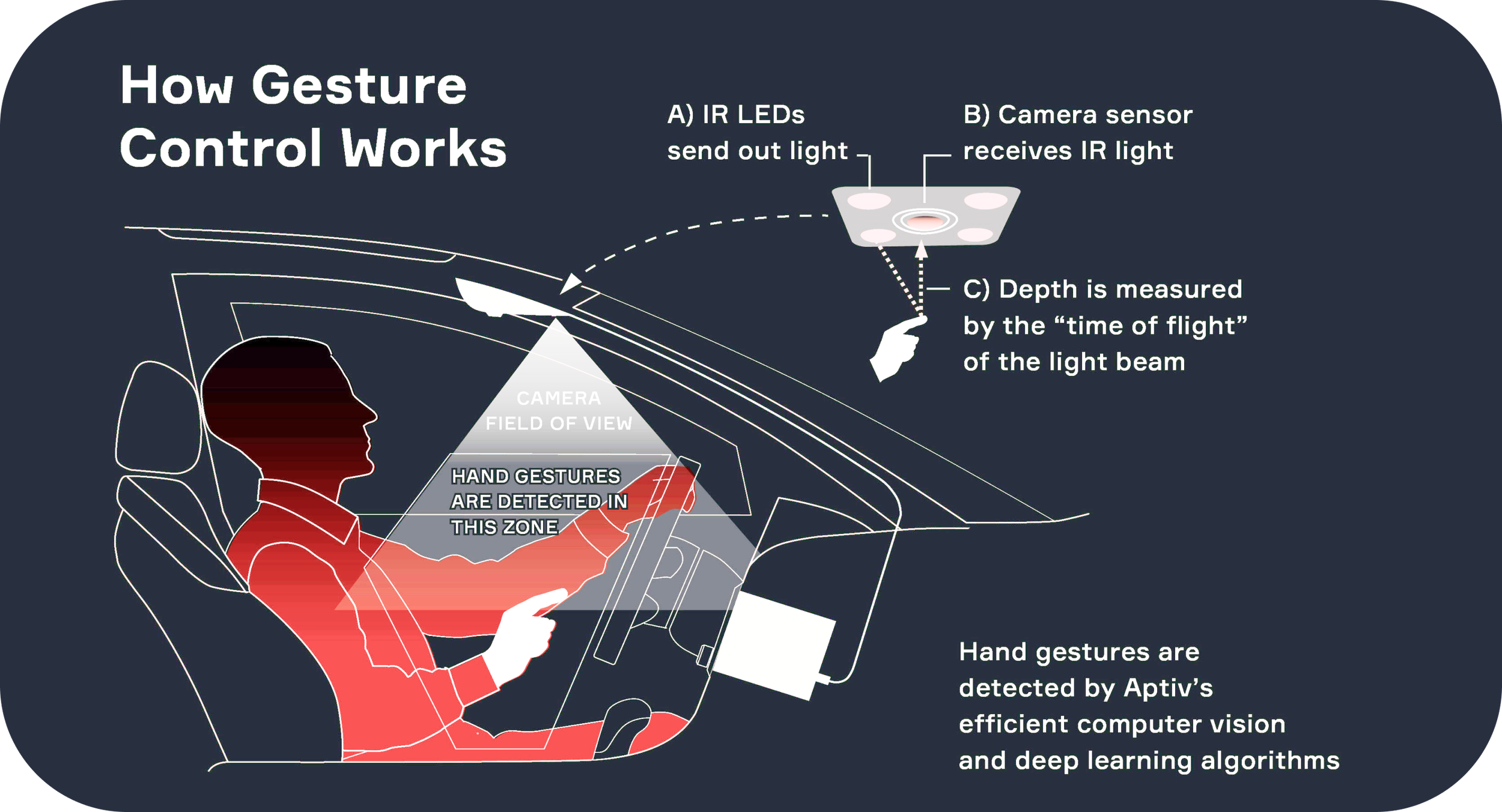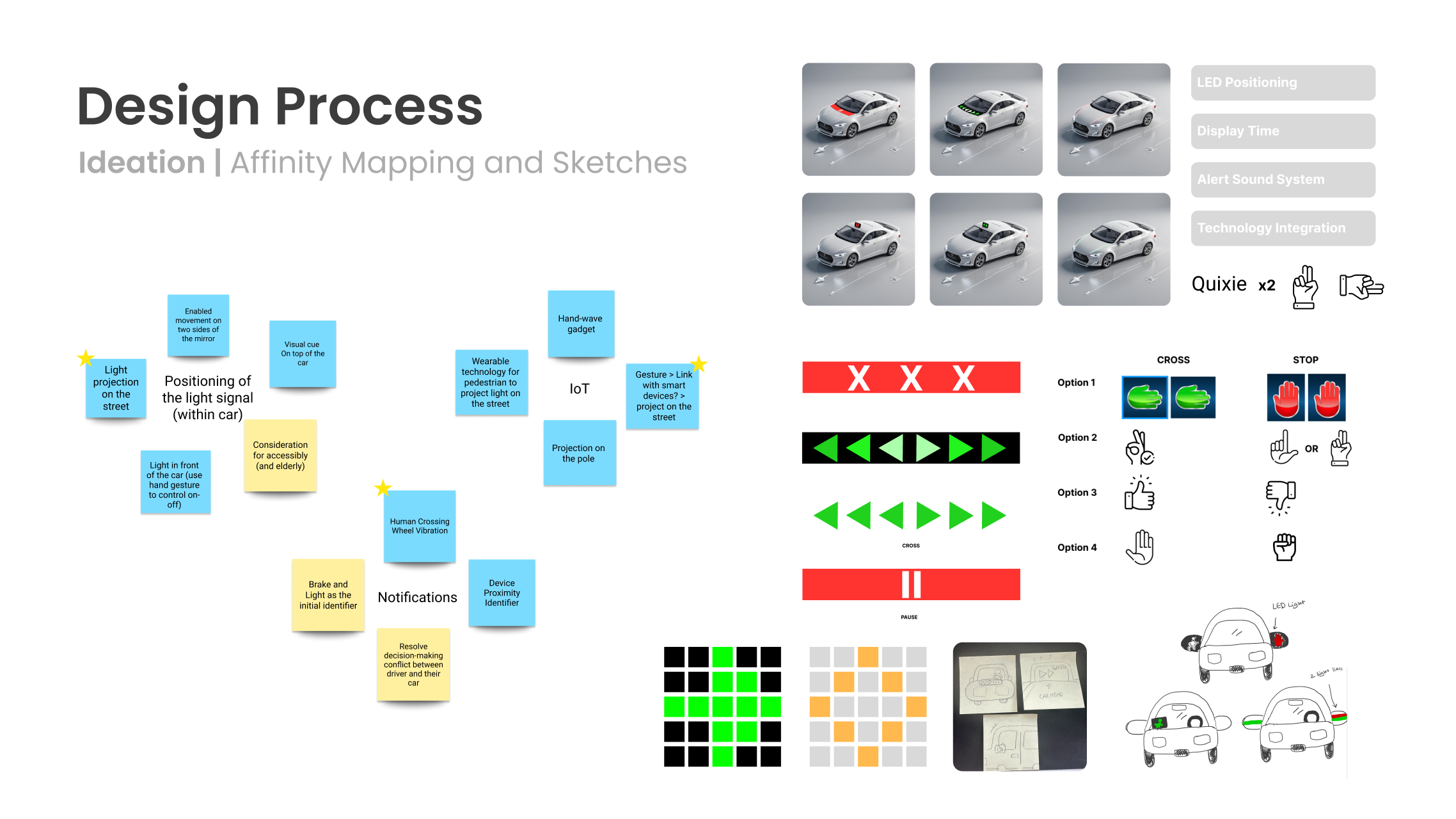What are the challenges you often face while crossing the street?
Which part of the car/driver could indicate their intention to pedestrians?
Define | Problem Statement
It all starts with a gesture.
The “Collide” Moment.
Communication between drivers and pedestrians is important for safety and smooth traffic flow. However, traditional methods such as hand signals or verbal cues can sometimes be misinterpreted or go unnoticed, leading to potential risks on the road.
Define | Indicators
Opportunities
Visual Cues
Both driver and pedestrian normally use hand signal to communicate their intention
Audio Cues
Some car models have engine sounds, which interestingly become an indicator for pedestrians to anticipate their speed.
Comprehensive Sensory Cues
If use appropriately, visual + audio cues can enhance communication, aiding people with accessibility needs in navigating their surroundings.
Limited Visibility
Sometimes the windshield and car motion make it hard to see from outside
Challenges
Omitted Potential Signal
Electric cars often lack a "motion sound," making it more difficult for pedestrians to notice and anticipate their movements.
Technology Advantages
Certain car models now include built-in sensors that detect the presence of pedestrians, though these sensors are primarily used internally.
Ideation | Points of Interventions
CLICK TO VIEW IMAGEOverview | Design x Gesture
PROJECT TYPE
UX Design, Gestural Design,
Concept Development
MY ROLE
User Research,
Wireframing & Prototyping,
Video Editing, Usability Testing
TOOLS
Figma, Miro,
Adobe Premier, Spline
TEAM
Tiffany Nguyen,
Sutunya Sawangcharoen
TIMELINE
April 2024 (3 Weeks)
Introducing Quixie
Quixie is a cutting-edge system designed to facilitate communication between drivers and pedestrians through intuitive gestures. The system aims to enhance road safety and streamline interactions in urban environments where pedestrians and vehicles often share space.
Our Design | How it works
Through Quixie, drivers can use predefined gestures to convey messages such as "you may cross" or "wait" to pedestrians, improving mutual understanding and reducing ambiguity on the road.
Our Design | Communication Diagram
Our Current Iteration | Key Discussions
Opportunities
1. Simplicity and Intuitiveness | The design takes into consideration common gestures that users are already familiar with from their everyday experiences, and leverages it.
2. Interpretable | Simple steps, easy for driver to perform. The displayed symbols are universally understood.
3. Provide Feedback | Embedded both visual and auditory responses to users to confirm that their gestures have been recognized and interpreted correctly by the system
4. Effective Communication | Foster a more cooperative environment, ultimately contributing to improved road safety.
5.) Internet of Things (IoT) | The design has the potential to integrate with other existing devices and expand to an adaptive system in the near future.
Limitations
1. Accessibility | Not all users may be able to perform certain physical gestures due to various disabilities or impairments.
2. Limited Visibility and Distance | In specific contexts, it might still be difficult for road users to see gestures clearly;
3. Technology Dependency | Rely on the display system to provide accurate signals. If the system fails, it could increase product turnover rate.
4. It’s the learning curve! We’d love to improve the design through testing and create a more thoughtful and inclusive experience.” 😊








